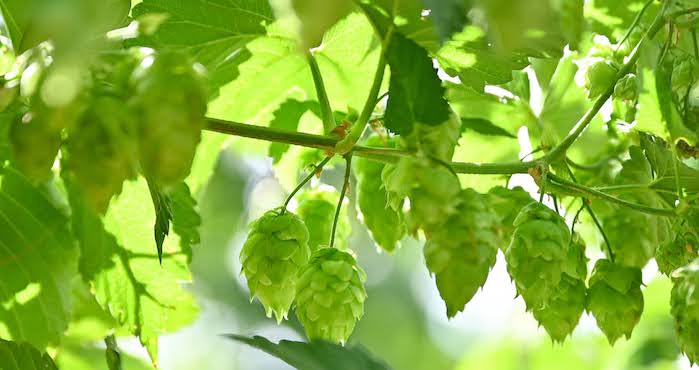Hop Science Newsletter (July 2021)
In this issue: inspired by wine, what happens if hops are exposed to smoke, and news about flavor stability in dry-hopped beer.

INSPIRED BY WINE
The last couple of years have shown how many similarities there are between hops and wine. Both are influenced by terroir and they also have a few aroma compounds in common: Monoterpenes, Sesquiterpenes and also volatile thiols. This US research team published a review summarizing the understanding of the genetic basis of grape and wine aroma. Knowledge of the genes involved in the biosynthesis of a particular aroma compound can help breeders select for desirable genotypes and raises the possibility of modulating the expression of these genes to attain a desired volatile profile in wine. A single reference genome has its limitations here as drastic changes in the aroma profile can occur due to small mutations in key genes. Therefore, sequencing several genomes will help to facilitate the discovery of genes and alleles responsible for varietal characteristics.
WHAT HAPPENS TO HOPS IF EXPOSED TO SMOKE?
Last year the hop growing area along the west coast of the US suffered a record breaking wildfire season. With this, hops growing there were exposed to smoke prior to harvest and processing. The aroma compounds of smoke with low flavour thresholds are volatile phenolics e.g. Guaiacol or 4-methylguaiacol. Using GC, these compounds can be accurately quantified. The researchers found noticeable amounts of these compounds in hops that also transferred into the final beer with both pre- and post-fermentation additions. Though the transferred amounts where below the flavour threshold of these compounds, a trained group of panelists rated the smoke taint as perceptible. Unless you are producing a “Rauchbier”, smoke taint is probably not the flavour you want to obtain from hops.
NEWS ABOUT FLAVOR STABILITY IN DRY-HOPPED BEER
Bisufite (HSO3) in beer is used to extend flavor stability. Though elevated bisulfite concentrations improve beer shelflife analytically, the sensory flavour stability is often decreased. This US research team looked into the differences in dry-hopped and non-dry-hopped beers using very sophisticated analytical tools. Adding excessive levels of SO2 , coupled with high temperature exposure, propagated more SO3 radicals and shortened flavor stability and shelf-life in all beers non-dry-hopped beers (cold/high temperature storage). Higher levels of hop and malt polyphenol antioxidants in the dryhopped beer was found to be responsible for protecting the dry-hopped beer from higher SO3 radical propagation. This supports the theory that too much SO2 and lower polyphenols are detrimental to beer flavor stability, even in fresh beer. The researchers concluded that every style of beer may have different target SO2 levels to utilize the beneficial antioxidative capacity of SO2 without incurring pro-oxidative activity by exceeding the respective SO2 upper limit. If the total amount of SO2 can be reduced based on the antioxidative requirement of beer, improved beer flavor stability and reduced risks of bisulfite allergic reactions would result.
OUTLOOK HOPS ACADEMY:
• July 28th, CampusArt: Hopsessed Tasting; Webinar
• October 27th, Hop Flavor Impact Day; Webinar
• November 17th, Harvest-Boniteur; Webinar
For more information please visit: https://www.barthhaas.com/en/academy Do you have any questions or would you like to
book your course? Please send a mail to Susanne: susanne.hortolani@barthhaas.de
REFERENCES:
1. Lin et al, The genetic basis of grape and wine aroma, Horticulture Research (2019) 6 :81 https://doi.org/10.1038/s41438-019-0163-1
2. Stacey Williams & Justin Alexander (2021): A HS-SPME Arrow/GC-MS Method for Determination of Smoke Taint-Related Volatile Phenols in Humuluslupulus, Journal of the American Society of Brewing Chemists, DOI: 10.1080/03610470.2021.1937779
3. Robert T. Foster II & Kalina Ranguelova (2021) Discovery of Bisulfite and an Uncharacterized Carbon-Centered Radical Systems in Non-Dry-Hopped and Dry-Hopped Beers Using a Different Spin Trap, 5, 5-Dimethyl-1-Pyrroline- N-Oxide, and a New Electron Paramagnetic Resonance Method, Journal of the American Society of Brewing Chemists, 79:3, 249-258, DOI: 10.1080/03610470.2020.1864699



